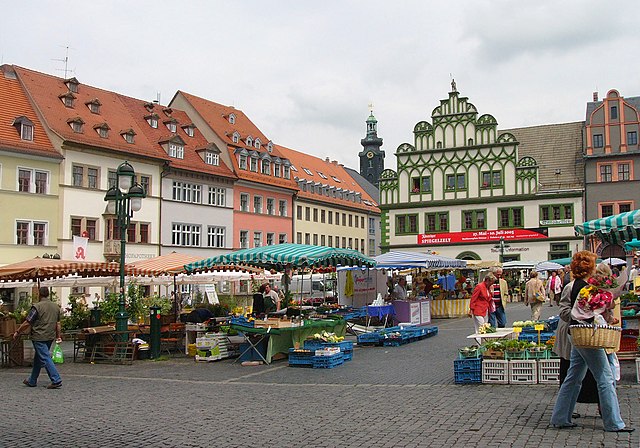Schloss Weimar is a Schloss (palace) in Weimar, Thuringia, Germany. It is now called Stadtschloss to distinguish it from other palaces in and around Weimar. It was the residence of the dukes of Saxe-Weimar and Eisenach, and has also been called Residenzschloss. Names in English include Palace at Weimar, Grand Ducal Palace, City Palace and City Castle. The building is located at the north end of the town's park along the Ilm river, Park an der Ilm. It forms part of the World Heritage Site "Classical Weimar", along with other sites associated with Weimar's importance as a cultural hub during the late 18th and 19th centuries.
View of the South wing, the tower, and the oldest part Bastille on the left
The Baroque Schlosskirche (court chapel), built 1619 to 1630, with the organ above the altar, by Christian Richter, c. 1660
Town and Residenz around 1650
The Wilhelmsburg around 1730
Weimar is a city in the German state of Thuringia, in Central Germany between Erfurt to the west and Jena to the east, 80 km (50 mi) southwest of Leipzig, 170 km (106 mi) north of Nuremberg and 170 km (106 mi) west of Dresden. Together with the neighbouring cities of Erfurt and Jena, it forms the central metropolitan area of Thuringia, with approximately 500,000 inhabitants. The city itself has a population of 65,000. Weimar is well-known because of its cultural heritage and importance in German history.
View of Weimar
Park an der Ilm
The Kasseturm is a relic of the former city wall at Goetheplatz.
Market Square with some 16th-century Renaissance patricians' houses








